I had thought I would get to East Durham in due time, but time is not a luxury East Durham can afford, as it is disappearing on a seemingly daily basis.
Above, the northwest corner of Driver and Angier, anchored by the old Fidelity Bank building, looking northwest, 2007. Until 3/19/07, there was a building behind the bank building on Angier.
East Durham has been my favorite neighborhood in Durham for some time now. During the 1960-1990 era that brought so much destruction to other parts of Durham, East Durham remained relatively intact, largely due to homeownership by longstanding residents of this milltown that, like West Durham, another textile 'village', grew outside the city limits before being annexed during, I believe, the 1920s.
The southwest corner of Driver and Angier, looking southwest, 2007.
I had intended to spend a lot of time developing a landscape history of East Durham, and perhaps I'll come back to that, but there may not be much left if I wait.
By the late 1980s, the generation who remembered the Durham Cotton and Manufacturing company (two blocks away from the above intersection where Driver St. crosses the tracks) was dwindling. For whatever reason, the constellation of symptoms that precipitate neighborhood decline took hold here - falling property values, loss of neighborhood jobs, housing snapped up by Durham's land barons who converted them to low-investment rentals, increasing poverty among remaining residents, and the conversion of East Durham to one of the only housing options for poor poeple. Property was abandoned, crime blossomed.
Things did not change for the better over the next ~15 years. The rising tide of wealth in the Triangle decidedly did not lift East Durham's boat. Ironically, this may have helped save some of the structures, trees, and streets that help to make East Durham a well-designed, pedestrian-oriented neighborhood; simply put, no one in the private market cared enough to even tear anything down.
Intact old service station, northeast corner of Angier Ave. and S. Guthrie, 2007.
But time and neglect were taking their toll on the neighborhood, and whatever programs the city had for addressing poverty and crime in the neighborhood were either ineffective or inadquate or both.
There was, anecdotally, a change in the department of Housing and Community Development's approach to East Durham in 2005. "CONDEMNED" signs were sprouting up everywhere, it seemed. And demolitions followed.
At the same time Preservation Durham, which at that time included me, was working hard to try to save empty structures along both Angier and Driver St. by securing options on properties to try to resell them to folks who wanted to renovate them, and, in the process, attaching historic covenants to the deed to protect the structure. We had secured options on several properties along Driver, East Main, Angier, and Vale St. I had persuaded Bank of America to donate an abandoned house to us.
One of the properties that we had an option for was the Horton House, a 1910 Queen Anne Victorian at 1803 Angier Avenue. It was a beautiful house, which we were marketing (via our option) for $35,000. That it sat for months at that price gives you a sense of how low property value is in East Durham.
Looking north, ~2005.
We made H&CD aware that we were trying to save the property. Sometime thereafter, they issued a demolition order, which we found out about and tried to avert. It was supposedly issued because a code enforcement officer saw some kids playing on the property, despite the fact that we had paid to board the up the property. The demolition crew evidently told a salvage company they could strip the house of all the woodwork/details (doors, windows, stair banisters, mantels.) H&CD said that it really needed to be torn down then, and, as it was then an empty shell, we had little recourse.
We still tried to stop the demolition, but could not. Housing and Community Development was unapologetic. In a meeting where I was trying to play the peacemaker, if you can believe that, Gray Dawson bristled at the notion that this was a mistake, saying that he had a duty to 'protect the public interest'.
The vacant, trash-strewn site of 1803 Angier, 3/20/07. Yeah - this seems to have helped the neighborhood tremndously in the past 16 months.
Within a month came the saga at 120 West Main St. which converted me from try-to-play-nice-and-work-within-the-system-guy to heretic.
In the ensuing year, the renamed 'Neighborhood Improvement Services' has continued their 'urban renewal' project in East Durham with the ongoing demolition of structures, particularly along Angier Avenue. As the main road between downtown and East Durham, Angier contains (contained) the majority of the larger 2-story Victorian structures in East Durham. Many of these have been neglected for some time but, despite the off-the-cuff, arbitrary (and meaningless) assessments of 'not worth saving' or 'too far gone' from some quarters, they are still good stock. Beyond the basic quality of construction, they are made of materials that simply don't exist anymore - dense old-growth pine and woodwork that no one makes anymore.
This house, in the 1700 block of Angier, was an example.
Looking west-northwest, late 2006.
Looks in rough shape, but definitely salvageable. See my post about 618 Arnette Avenue in the West End, which was in much worse shape. If you picture this house with a new roof, some trim repair, and a coat of paint... like this house 117 S. Driver St. (three blocks away), which was renovated last year, it would look a lot different.
Looking northeast, 2007.
But nobody's going to get that opportunity, because here's what it looks like today.
Looking northwest, 2007.
One block up the street in the 1900 block of Angier, some more concrete-stair tombstones mark the site of another recent demolition.
Looking south, 2007.
Or the 'Fireball' White-owned properties at 1601 and 1603 Angier
...which have been converted into a 'Fireball' White owned, trash-strewn vacant lot.
Looking northeast, 2007.
Towards the back of the lot.
Did I mention that most of these structures were contributing structures in the East Durham National Register Historic District?
The reason for this post now, today, when I'd planned to plug away at the rest of downtown for awhile, is the destruction of another contributing structure in the East Durham NRHD, at 2021 Angier Ave. - a great little commercial structure, with big metal frame windows and huge wooden front doors - what would have been an awesome space for a community center, art/design space, etc. etc.
2021 Angier, ~2002
(Courtesy of Preservation Durham)
But not anymore.
Since NIS keeps claiming that they have an open process and make everyone aware of what they are up to, I called the folks at Preservation Durham to ask them if they had been made aware that NIS intended on demolishing a contributing structure in the East Durham National Register Historic District. They had not. There is no publicly-accessible information about which properties are at what point in the process, and what the schedule might be for that property to be demolished. The only sense I have as to how one might figure out when a historic structure would be demolished would be to attend every Housing Appeals Board meeting, and wait to see if a historic structure appears on the list. If it does, you'd have 30 days to try to do something about it, without the help of NIS. The process is, for all practical purposes, impenetrable.
Which makes it all the more concerning that, around the corner from this destroyed building is another "CONDEMNED" sign, in the middle of a great row of early 20th century commercial structures.
While I understand that the folks at NIS think they are helping - by "eliminating blight" - there is no evidence that demolishing historic structures - even decrepit ones - helps neighborhoods, and some evidence that it harms them. The fundamental problem with a neighborhood like East Durham is a problem of economics. There is a lot of poverty in East Durham. Decrepit housing is a symptom of the problem. The housing stock is a neighborhood asset - by demolishing the housing stock, you are reducing the assets of an already-impoverished neighborhood. To fully develop a problem-symptom metaphor, it's like treating pneumonia by removing someone's lungs.
Back when I was practicing medicine, there was a term for treating someone's symptoms without addressing the real problem. It was called making them comfortable. I, for one, am not up for letting East Durham die.




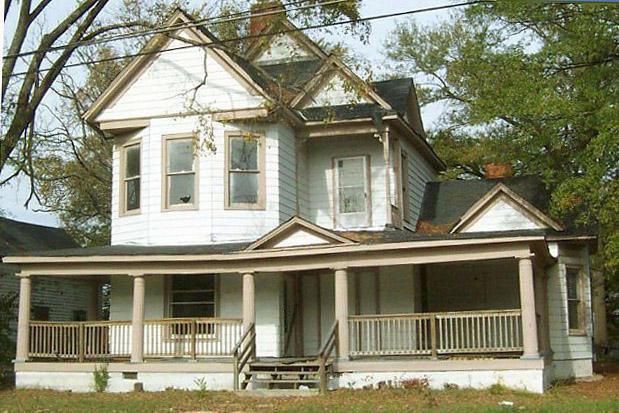

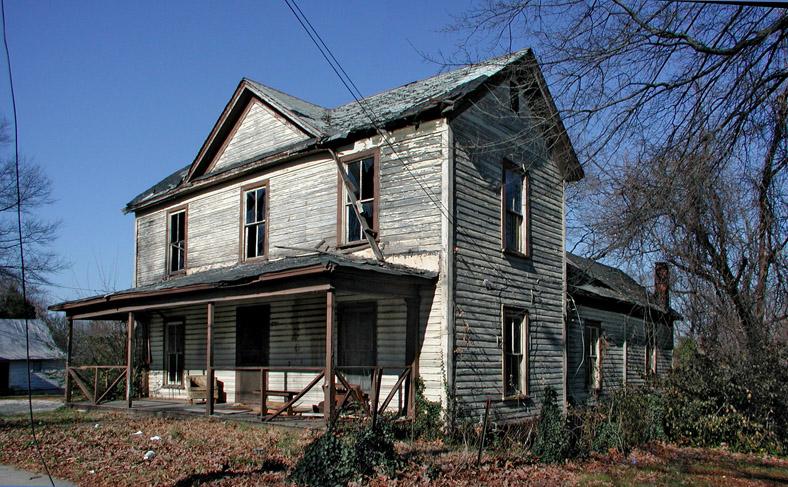


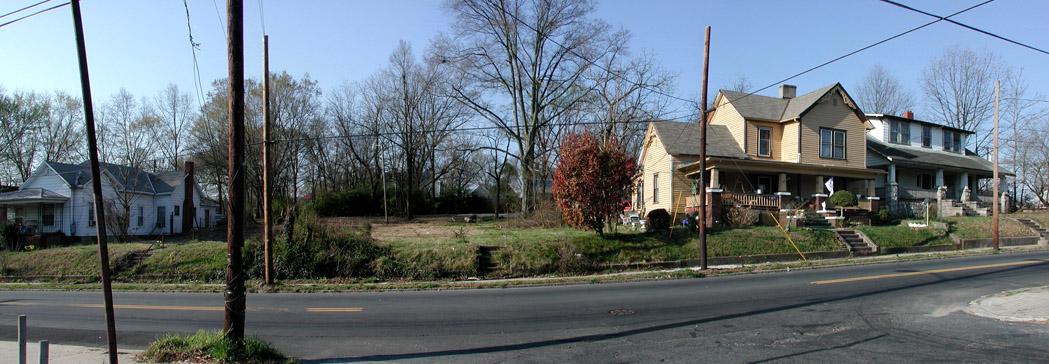

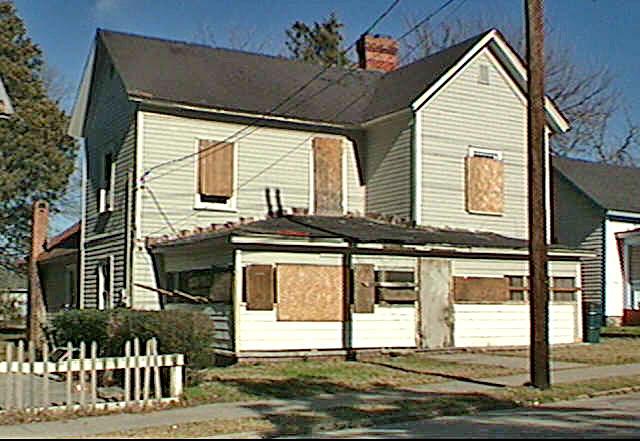




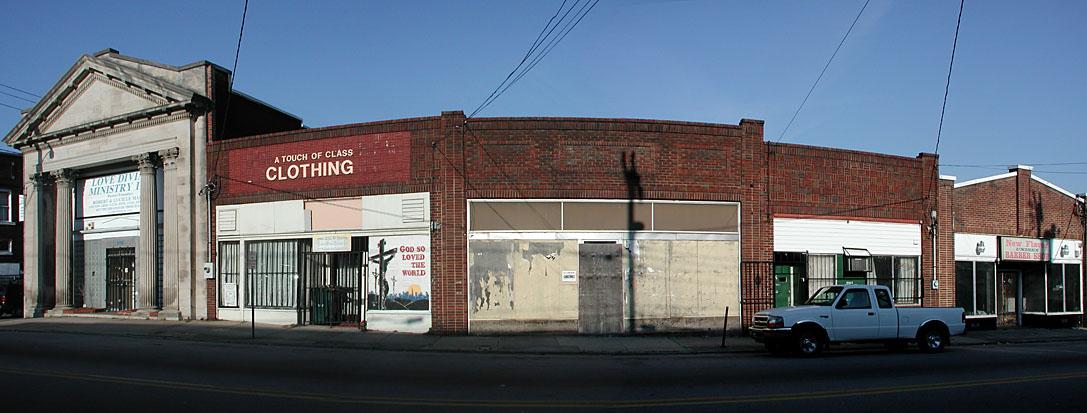
Comments
Submitted by Anonymous (not verified) on Wed, 3/21/2007 - 8:07pm
Thanks for this post. I've been reading your blog for a while now and have been meaning to say this - you're a hero to this city. Keep up the good work, and I hope the satisfaction from your successes make up in some way for the disappointments like you document here.
Submitted by Gary (not verified) on Wed, 3/21/2007 - 10:06pm
anon
Wow - thank you. I really appreciate your kind words, although I certainly wouldn't put myself in that category. Thank you so much for reading and caring about the city as well.
GK
Submitted by dcrollins (not verified) on Thu, 3/22/2007 - 12:11am
I hate to play the libertarian conspiracy kook, but I think one of the reasons HPSD is so reluctant to take on the city is because they are publicly funded.
At HPSD's Lunch and Learn event today (topic: the 21 most endangered Durham properties), there were a paucity of East Durham buildings noted. Instead they showed more mainstream projects such as the King's Daughters Home and the McPherson Hospital to the crowd of elderly and almost entirely white patrons. They even showed a picture of my house on Club Blvd. (which I was quick to point out was *not* endangered, despite my duct-tape-and-baling-wire style repairs).
Submitted by Anonymous (not verified) on Thu, 3/22/2007 - 12:46am
Although I was at the next table over from Mr. Rollins at the luncheon today, we somehow heard entirely different presentations. There was in fact considerable discussion of East Durham, including several slides that were nearly identical to some of those posted here.
The mention of Mr. Rollins' house on Club Blvd. was made in the context of discussion of pressures exerted on the edges of historic neighborhoods such as those facing Northgate Mall and those adjacent to the Brightleaf area.
I certainly don't see any value in questioning the integrity or efforts of the folks at Preservation Durham. Let's focus our animosity on the slumlords (including Durham City and County) who are neglecting and tearing down these properties.
Submitted by Gary (not verified) on Thu, 3/22/2007 - 2:27am
Dave
Oh, that's not kooky at all. The kooky conspriracy theory would be to wonder if the only reason the city funds non-profit organizations is to try to buy their silence.
I think it's hilarious right off the bat that 3 of the most endangered properties in Durham would be in Trinity Park. As well documented here, I'm an advocate for preservation of McPherson and all of the other great architecture in TP, but c'mon. That's a symptom of the problem - the most endangered properties are the ones no one is paying any attention to, not the ones that have the listservs a-flutter.
I find it utterly hilarious that they mentioned your house. I hope you showed some concern.
I do have to give HPSD credit for going ahead with the purchase of 118 S. Driver St. in East Durham. I don't know what they're going to do with it, but they saved it from a bad fate.
GK
Submitted by Gary (not verified) on Thu, 3/22/2007 - 2:30am
Anonymous
Preservation Durham does not take a public position on the demolition of structures by NIS. I understand why they feel they cannot - it isn't a matter of questioning anyone's integrity. It applies to multiple non-profits in the city who receive non-city agency funds and rely on them in order to survive. But I feel it is a mistake. I've done much, much work for and with Preservation Durham and count many friends in the organization. I don't agree with everything they do and don't address in the city. I may point out where I think they can do better/are falling down and some of them will be unhappy with me, but we'll all still be friends. We recognize that although we disagree on matters (and it's far better to be honest about these things) we all still believe in preservation.
GK
Submitted by dcrollins (not verified) on Thu, 3/22/2007 - 9:24am
I don’t want to come across as disparaging the good folks at Preservation Durham. We all work within the system to varying degrees, and I give them a fair amount of money in support of their efforts (heck, the E.T. Rollins side of the family is one of their main financial sponsors). It’s kind of like the ACLU – while I’m in vehement disagreement of many of their positions, such as school choice, I still give them money because I think they do good work.
At the same time, regular readers of this website know that PD and Gary diverge on some very important points such as the relative importance of East Durham and the extent to which PD should question the city and the demolition process. NIS and many in city government seem to be in the pocket of development interests, and they don’t always have the best interests of the city in mind (never mind the interests of historic preservation).
I’ve attended the Lunch and Learn events for a few years now, and I’m always struck at the homogenous nature of the audience: mostly elderly and white. There’s not necessarily anything wrong with that; these events are marketed at their membership, and it costs money to join. At some of the events the city’s minority population has been better represented, such as the presentations on “Black Wall Street” and the Hayti neighborhood.
Yesterday’s presentation was among the best I’ve attended. The speaker, Tom Miller, is active in the People’s Alliance, which is certainly left-leaning although I don’t know the extent of their minority support. Like PD, they do good work even though reasonable people may differ on their approach. I think Tom kept the editorializing to a minimum, though there was a fair amount of murmuring at my table about the relative usefulness of non-conforming rehabilitations in the Walltown and West End neighborhoods.
This deserves a separate post, but suffice to say that if boarded up houses are repaired with new materials (standard windows, vinyl siding) I think it is perfectly reasonable that the needs of the homeowner and the community are being met. The houses shown may not win any preservation awards, but they have at least kept the front porches, roofline, and stoop. They meet the community’s need for affordable housing, and they are certainly better than teardowns. Even though the houses may be cheap (Mr. Miller implied they were throwaway), the underlying value of the land will be improved as more boarded up houses are replaced by rehabbed homes or even a limited amount of infill development.
In any event, it was certainly not the forum for an extended discussion of PD’s methods. These were one man’s collection of 21 properties, and while there were fewer East Durham buildings than I would have liked, the inclusion of structures such as the Chesterfield Building, McPherson Hospital, the McPherson Nurse’s Quarters, and the King’s Daughters home got a lot of heads nodding in recognition even though in my opinion these structures will never be threatened due to their universal appeal.
Perhaps ‘anonymous’ took better notes than I; I think the list of 21 would make a good entry for this website.
Submitted by dcrollins (not verified) on Thu, 3/22/2007 - 10:01am
In the interests of disclosure I should also point out I am being proposed for election to the TPNA board of directors at the April meeting as a "pro-development" candidate (the McPherson condos). Regular readers of this website and my other postings on the web should be able to reconcile my pro-preservation and pro-development positions within a libertarian framework.
Submitted by Emily (not verified) on Mon, 3/26/2007 - 4:43am
I was just checking out this blog as East Durham is part of my family's heritage. Both of my parents are from East Durham - well, I am too. They grew up there in the 50s and 60s, witnessing the demise of their parents hard labor to build a decent community.
We were members of the Angier Avenue Baptist, and my uncle owned/ran Lynnette's restaurant at one point in the 1980s. I did not grow up in East Durham, but I've heard so many, many stories from my parents, friends and family about the people who inhabited East Durham and all that. (My parents moved to another part of NC while my grandparents and uncles/aunts/cousins still live there in other parts of Durham - mainly Northern Durham. That mass exodus to a "better" place, I guess.)
Oddly enough, I just posted a small part of a watercolor (done in the 1980s) by my father on my blog earlier this evening. It's a watercolor of the house he grew up in on Angier Avenue.
I look forward to reading more of and following your blog.
EHR
Submitted by Gary (not verified) on Mon, 3/26/2007 - 12:03pm
Emily
Thanks so much for your comment - I love getting more stories/info about houses and neighborhoods - and that is a common theme for East Durham. Thanks for mentioning the picture - do you know what the address was (or just what street it is/was on?)
GK
Submitted by Emily (not verified) on Thu, 3/29/2007 - 1:31am
Gary,
I will check with my father for the exact address. Also, my mother grew up in two "newer" homes built by my paternal grandfather on Bingham Street (I think that's right). I do know that my father's childhood home is still there as he told me he rode by recently. He lived almost directly across the street from what used to be "Olive's Grocery". Their home was on the corner next to an Atlantic station on a corner too.
Having studied architecture and design myself at NC State, I was always intrigued by the street alleys that ran along the back of properties like the one where my father grew up. . .
I will say that there's still some bitterness over the "loss" of East Durham. My grandparents and relatives always felt like the government sold them out to public housing (and unfortunately, some of the cultural problems related to that). All they and their friends worked for was disrespected in the 60s and 70s - at least that is how they feel about it.
I'll get back about the address on Angier Avenue.
Emily
Submitted by bullcity76 (not verified) on Sat, 3/31/2007 - 2:54pm
I hope these vacant lots aren't replaced with suburban style housing. In Greensboro, they have contracted an architect to ensure that new houses in their historic district maintain architectural details from the adjoining properties. Including no vinyl!!!!
I think Durham is still trying maintain a balance between gentrification and the status quo.
I really hope that people improve the current housing stock before throwing up a new house among 4 or 5 vacant structures. This scenario doesn't work well for the new house in most cases.
Submitted by klm (not verified) on Thu, 5/15/2008 - 8:06pm
haven't lived in Durham in years, I lived in Trinity Park and West Durham (Behind EK Powe school) but had reason to regularly drive through this neighborhood during the 80's and 90's. It was such a beautiful neighborhood. It is such a shame that they are tearing the houses and commercial buildings down instead of using them as seeds for redevelopment.
Add new comment
Log in or register to post comments.